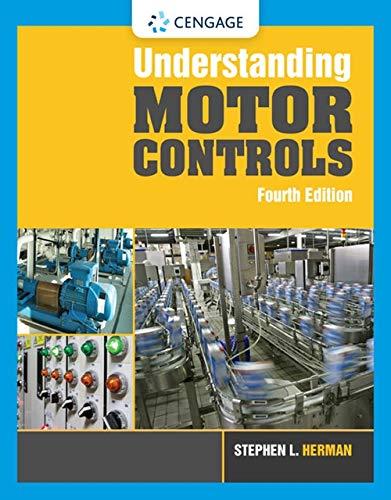
Foundations of Materials Science and Engineering
6th Edition
ISBN: 9781259696558
Author: SMITH
Publisher: MCG
expand_more
expand_more
format_list_bulleted
Concept explainers
Question
Chapter 14.12, Problem 27KCP
To determine
The description for the movement of majority carriers in a p-n junction diode at equilibrium.
The depletion region of a p-n junction.
Expert Solution & Answer
Want to see the full answer?
Check out a sample textbook solution
Students have asked these similar questions
13.64 The shaft shown in Sketch h transfers power between
the two pulleys. The tension on the slack side (right pul-
ley) is 30% of that on the tight side. The shaft rotates
at 900 rpm and is supported uniformly by a radial ball
bearing at points 0 and B. Select a pair of radial ball bear-
ings with 99% reliability and 40,000 hr of life. Assume
Eq. (13.83) can be used to account for lubricant clean-
liness. All length dimensions are in millimeters. Ans.
Cmin = 42,400 N.
A 4 inch wide, 12 inch tall cross section beam is subjected to an internal shear of 5.5 kips. What is the maximum transverse shear stress in the beam in psi if this bending is about the x axis?
A Brayton cycle produces 14 MW with an inlet state of 17°C, 100 kPa, and a compression ratio of 16:1. The heat added in the combustion is 960 kJ/kg. 0.7 MW of heat transferred from the turbine to the environment. What are the highest temperature and the mass flow rate of air? Assume cold air properties.
Chapter 14 Solutions
Foundations of Materials Science and Engineering
Ch. 14.12 - Describe the classic model for electrical...Ch. 14.12 - Prob. 2KCPCh. 14.12 - Prob. 3KCPCh. 14.12 - Prob. 4KCPCh. 14.12 - Prob. 5KCPCh. 14.12 - Define the following quantities pertaining to the...Ch. 14.12 - Prob. 7KCPCh. 14.12 - What structural defects contribute to the residual...Ch. 14.12 - Prob. 9KCPCh. 14.12 - Prob. 10KCP
Ch. 14.12 - Prob. 11KCPCh. 14.12 - Prob. 12KCPCh. 14.12 - Prob. 13KCPCh. 14.12 - Prob. 14KCPCh. 14.12 - Prob. 15KCPCh. 14.12 - Prob. 16KCPCh. 14.12 - Prob. 17KCPCh. 14.12 - Prob. 18KCPCh. 14.12 - Prob. 19KCPCh. 14.12 - Prob. 20KCPCh. 14.12 - Prob. 21KCPCh. 14.12 - Prob. 22KCPCh. 14.12 - Prob. 23KCPCh. 14.12 - Prob. 24KCPCh. 14.12 - Prob. 25KCPCh. 14.12 - Prob. 26KCPCh. 14.12 - Prob. 27KCPCh. 14.12 - Describe the movement of the majority and minority...Ch. 14.12 - Prob. 29KCPCh. 14.12 - Prob. 30KCPCh. 14.12 - What is a zener diode? How does this device...Ch. 14.12 - Prob. 32KCPCh. 14.12 - Prob. 33KCPCh. 14.12 - Prob. 34KCPCh. 14.12 - Prob. 35KCPCh. 14.12 - Describe how the planar bipolar transistor can...Ch. 14.12 - Prob. 37KCPCh. 14.12 - Prob. 38KCPCh. 14.12 - Prob. 39KCPCh. 14.12 - Prob. 40KCPCh. 14.12 - Prob. 41KCPCh. 14.12 - Prob. 42KCPCh. 14.12 - Prob. 43KCPCh. 14.12 - Prob. 44KCPCh. 14.12 - Prob. 45KCPCh. 14.12 - Prob. 46KCPCh. 14.12 - Prob. 47KCPCh. 14.12 - Prob. 48KCPCh. 14.12 - Prob. 49KCPCh. 14.12 - Prob. 50KCPCh. 14.12 - Prob. 51KCPCh. 14.12 - Prob. 52KCPCh. 14.12 - Prob. 53KCPCh. 14.12 - What are ferroelectric domains? How can they be...Ch. 14.12 - Prob. 55KCPCh. 14.12 - Prob. 56KCPCh. 14.12 - What are the PZT piezoelectric materials? In what...Ch. 14.12 - Prob. 58AAPCh. 14.12 - Prob. 59AAPCh. 14.12 - Prob. 60AAPCh. 14.12 - Prob. 61AAPCh. 14.12 - Prob. 62AAPCh. 14.12 - Prob. 63AAPCh. 14.12 - Prob. 64AAPCh. 14.12 - Prob. 65AAPCh. 14.12 - Prob. 66AAPCh. 14.12 - Prob. 67AAPCh. 14.12 - Prob. 68AAPCh. 14.12 - Prob. 69AAPCh. 14.12 - Prob. 70AAPCh. 14.12 - Phosphorus is added to make an n-type silicon...Ch. 14.12 - Prob. 72AAPCh. 14.12 - A silicon wafer is doped with 2.50 1016 boron...Ch. 14.12 - A silicon wafer is doped with 2.50 1015...Ch. 14.12 - Prob. 75AAPCh. 14.12 - Prob. 76AAPCh. 14.12 - Prob. 77AAPCh. 14.12 - What fabrication techniques are used to encourage...Ch. 14.12 - Prob. 79AAPCh. 14.12 - Prob. 80AAPCh. 14.12 - Calculate the intrinsic electrical conductivity of...Ch. 14.12 - Prob. 82AAPCh. 14.12 - Prob. 83AAPCh. 14.12 - Prob. 85AAPCh. 14.12 - Prob. 86AAPCh. 14.12 - Prob. 87AAPCh. 14.12 - Prob. 88AAPCh. 14.12 - Prob. 89AAPCh. 14.12 - Prob. 90AAPCh. 14.12 - Prob. 91AAPCh. 14.12 - Prob. 92SEPCh. 14.12 - Prob. 93SEPCh. 14.12 - Design a p-type semiconductor based on Si that...Ch. 14.12 - Prob. 95SEPCh. 14.12 - Prob. 96SEPCh. 14.12 - Prob. 97SEPCh. 14.12 - Prob. 98SEPCh. 14.12 - Prob. 99SEPCh. 14.12 - Prob. 100SEP
Knowledge Booster
Learn more about
Need a deep-dive on the concept behind this application? Look no further. Learn more about this topic, mechanical-engineering and related others by exploring similar questions and additional content below.Similar questions
- . A gas turbine with air enters the compressor at 300 K, 1 bar, and exits from the turbine at 750 K, 1 bar. The thermal efficiency of the cycle is 40.1% and the back work ratio (BWR) is 0.4. Find the pressure ratio of the cycle. Assume variable specific heat.arrow_forwardA regenerative gas turbine power plant is shown in Fig. below. Air enters the compressor at 1 bar, 27°C with a mass flow rate of 0.562 kg/s and is compressed to 4 bar. The isentropic efficiency of the compressor is 80%, and the regenerator effectiveness is 90%. All the power developed by the high-pressure turbine is used to run the compressor. The low-pressure turbine provides the net power output. Each turbine has an isentropic efficiency of 87% and the temperature at the inlet to the highpressure turbine is 1200 K. Assume cold air properties, determine: a. The net power output, in kW. b. The thermal efficiency of the cycle.arrow_forwardFor tixed inlet state and exit pressure, use a cold-air standard analysis to show that the pressure ratio across the two compressor stages that gives nunimum work input is:=)) k/(k-1) when Ta Ti, where Ta is the temperature of the air entering the second stage compressor and Pi is the intercooler pressure. Put the suitable assumptionsarrow_forward
- Derive the equation below ah ap ax 12μ ax, +( ah ap ay 12μ ay Where P P (x, y) is the oil film pressure. 1..ah 2 axarrow_forwardCan you determine the eignevalues by hand?arrow_forwardMonthly exam 13 2021-2022 Power plant Time: 1.5 Hrs Q1. A The gas-turbine cycle shown in Fig. is used as an automotive engine. In the first turbine, the gas expands to pressure Ps, just low enough for this turbine to drive the compressor. The gas is then expanded through the second turbine connected to the drive wheels. The data for the engine are shown in the figure, and assume that all processes are ideal. Determine the intermediate pressure Ps, the net specific work output of the engine, and the mass flow rate through the engine. Find also the air temperature entering the burner T3 and the thermal efficiency of the engine. Exhaust Air intake Φ www Regenerator www Bumer Compressor Turbine Power turbine et 150 kW Wompressor P₁ = 100 kPa T₁ = 300 K PP₁ =60 P-100 kPa T₁ = 1600 K Q2. On the basis of a cold air-standard analysis, show that the thermal efficiency of an ideal regenerative gas turbine can be expressed as 77 = 1- where - () () гp is the compressor pressure ratio, and T₁ and…arrow_forward
- I need to find m in R = mD from the image given. Do you really need to know what R and D is to find R. I was thinking geometrically we can find a relationship between R and D. D = R*cos(30). Then R = mD becomes m = R/D = 1/cos(30) = 1.1547. Is that correct?arrow_forwardQ1] B/ (16 Marks) To produce a lightweight epoxy part to provide thermal insulation. The available material are hollow glass beads for which the outside diameter is 1.6 mm and the wall thickness is 0.04 mm. Determine the weight and number of beads that must be added to the epoxy to produce a 0.5 kg of composite with a density of 0.65 g/cm³. The density of the glass is 2.5 g/cm³ and that of the epoxy is 1.25 g/cm³.arrow_forwardBelow is a projection of the inertia ellipsoid in the b1-b2 plane (b1 and b2 are unit vectors). All points on the ellipsoid surface represent moments of inertia in various directions. The distance R is related to the distance D such that R = md. Determine m.arrow_forward
- Below is a projection of the inertia ellipsoid in the b1-b2 plane (b1 and b2 are unit vectors). All points on the ellipsoid surface represent moments of inertia in various directions. Determine I_aa ( moment of inertia) for direction n_a (this is a unit vector).arrow_forwardThe problems are generally based on the following model: A particular spacecraft can be represented as a single axisymmetric rigid body B. Let n₂ be inertially fixed unit vectors; then, 6, are parallel to central, principal axes. To make the mathematics simpler, introduce a frame C where n₂ = ĉ₁ = b; initially. 6₁ Assume a mass distribution such that J =₁₁• B* •b₁ = 450 kg - m² I = b² •Ï¾˜ • b₂ = b¸ •Ï¾* •b¸ = 200 kg - m² K J-I C³ =r₁₁ = r₁₁arrow_forwardThe problems are generally based on the following model: A particular spacecraft can be represented as a single axisymmetric rigid body B. Let n₂ be inertially fixed unit vectors; then, 6, are parallel to central, principal axes. To make the mathematics simpler, introduce a frame C where n₂ = ĉ₁ = b; initially. 6₁ Assume a mass distribution such that J =₁₁• B* •b₁ = 450 kg - m² I = b² •Ï¾˜ • b₂ = b¸ •Ï¾* •b¸ = 200 kg - m² K J-I C³ =r₁₁ = r₁₁arrow_forward
arrow_back_ios
SEE MORE QUESTIONS
arrow_forward_ios
Recommended textbooks for you
 Understanding Motor ControlsMechanical EngineeringISBN:9781337798686Author:Stephen L. HermanPublisher:Delmar Cengage Learning
Understanding Motor ControlsMechanical EngineeringISBN:9781337798686Author:Stephen L. HermanPublisher:Delmar Cengage Learning Automotive Technology: A Systems Approach (MindTa...Mechanical EngineeringISBN:9781133612315Author:Jack Erjavec, Rob ThompsonPublisher:Cengage Learning
Automotive Technology: A Systems Approach (MindTa...Mechanical EngineeringISBN:9781133612315Author:Jack Erjavec, Rob ThompsonPublisher:Cengage Learning

Understanding Motor Controls
Mechanical Engineering
ISBN:9781337798686
Author:Stephen L. Herman
Publisher:Delmar Cengage Learning

Automotive Technology: A Systems Approach (MindTa...
Mechanical Engineering
ISBN:9781133612315
Author:Jack Erjavec, Rob Thompson
Publisher:Cengage Learning
EVERYTHING on Axial Loading Normal Stress in 10 MINUTES - Mechanics of Materials; Author: Less Boring Lectures;https://www.youtube.com/watch?v=jQ-fNqZWrNg;License: Standard YouTube License, CC-BY